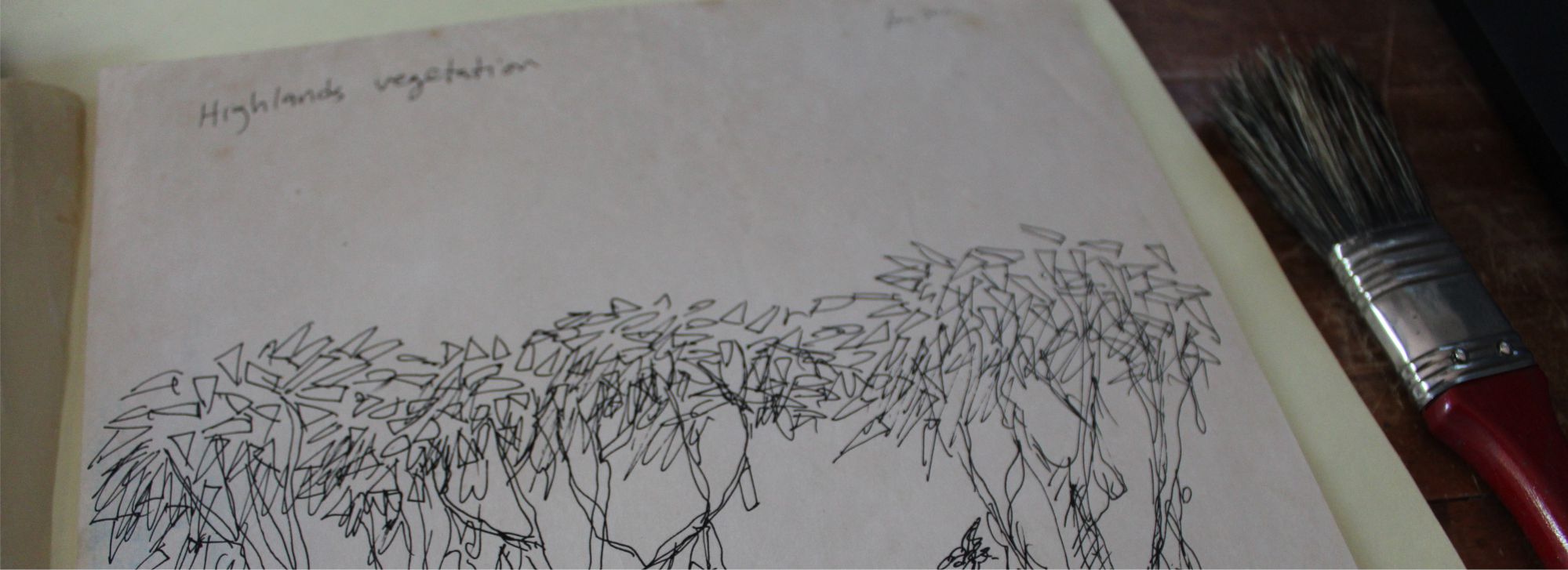Section
Contents and pieces
The contents of the CDF Library, Archive & Museum can be structured and presented at different levels. Materials can be understood, for example, as individual pieces; as pieces joined by relationships of different kinds that create narrative lines; as elements that interact with each other to tell stories and anecdotes; and as materials that allow to recover memories on the brink of oblivion.
Those four axes (piece, line, story and memory) have therefore been chosen to present the Galapagueana collections. This section gives access to a selection of materials organized in those levels.
Associated sections: Collections; Fragments for a history; Highlight; The traces of the islands' memory
Piece
The pieces presented in Galapagueana are individual documents: elements that allow the codification of knowledge and memory and that, therefore, have a documentary (and, sometimes, heritage) value. In their role as pieces, they are analyzed and understood as independent materials and as parts of a context that gives them meaning and significance.
Piece 001
The Galapagos expedition organized by American billionaire Astor in 1930 aboard the Nourmahal left a wonderful photo album. We rescued one of them: the one of a sailor with a sea lion pup on his lap.
Piece 002
The work of reproduction and rearing of the Galapagos giant tortoises has been documented in countless materials. Among the most iconic are the photographs and slides that record the moment when the eggs hatch.
Piece 003
The US military base located on Baltra (or South Seymour) Island between 1942 and 1946 left, among other legacies, a series of essential documents for modern Galapagos history. They include numerous photos of the soldiers.
Piece 004
One of the most emblematic buildings of the Charles Darwin Research Station is the Van Straelen. A number of documents from the CDF Archives give an account of its history. Including a visit by Ecuadorian Vice-President Osvaldo Hurtado in 1979.
Line
The narrative lines selected for Galapagueana are series of pieces or documents linked by relationships of different types. The threads that link those elements in meaningful narratives can be of very different natures, and depend on the analyst's gaze.
Line 001
Several pieces from different collections at the CDF Archive make reference to injured animals: Galapagos fauna found with hooks, ropes or other elements. This narrative line recovers that story.
Line 002
Several documents preserved in different collections at the CDF Library and Archive give an account of the process of reproduction and rearing of the giant Galapagos tortoises. This narrative line recovers that story.
Line 003
The small collection of slides by Alfred Croneis, donated by his widow to the CDF, documents various aspects of life at the Baltra Island military base in 1943, creating a narrative line that allows us to recover that history.
Line 004
The Van Straelen building of the Charles Darwin Research Station hosted the celebrations for the 20th anniversary of the creation of the CDF in 1979. Among the documents in the Institutional Archive are invitations and speeches from the event.
Story
The stories included in Galapagueana are born from the interaction and combination of different pieces and/or lines. These stories can take the form of anecdotes, or compose solid narrative frameworks that collect different elements of knowledge and memory and put them to dialogue to generate new materials.
Story 001
A manuscript at the British Museum, quoted by Heyerdahl, tells a story of pirates who buried their loot in the Galapagos, including jars of quince jelly. The CDF Museum collection brings us that story.
Story 002
The book Galapagos: A brief history, written by Jacob Lundh, son of Norwegian colonists settled in Puerto Ayora (Santa Cruz), gathers the early details of the process of reproduction and rearing of the Galapagos giant tortoises at the CDF.
Story 003
An aspect well remembered by the ex-soldiers who served at the Baltra Island base (but little documented in history books) was the presence of an "Order", a parody of the nobility ones, which was imposed to the soldiers.
Story 004
The original layout of the Charles Darwin Research Station did not include an educational space. In 1968, Swiss botanist and architect Daniel Weber designed the plans for the Van Straelen building, which opened in 1973 as an exhibition and conference hall.
Memory
The memories shared in Galapagueana are evoked by the pieces, lines and stories: fragments and experiences saved from oblivion, which are revived and built from preserved documents, oral tradition and other elements.
Memory 001
The search for archaeological artifacts in the highlands of Santa Cruz, using some of those currently preserved in the CDF Museum as a guide, recovered some curious memories of the local community.
Memory 002
A series of slides taken by photographer Tui de Roy in Española documents the moment of the release of tortoise #1000 on that island, and revives memories of the work developed by Galapagos National Park's ranger Fausto Llerena Sánchez.
Memory 003
When the US military base on Baltra (or South Seymour) Island was abandoned in 1946, the pine boards of the barracks were used by the local population to build houses. The popular material ended up being called "Baltra pine".
Memory 004
The design of the information contents of the exhibition hall in the Van Straelen building was a process that began with the inauguration of the space in 1973 and continues today. A series of documents from the CDF Archive provide an account of its development.
Text & picture: Edgardo Civallero (edgardo.civallero@fcdarwin.org.ec).
Publication date: 1 December 2021
Last update: 1 October 2023
